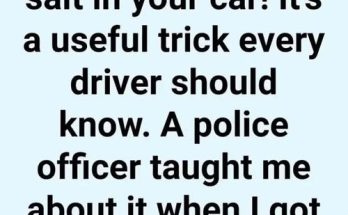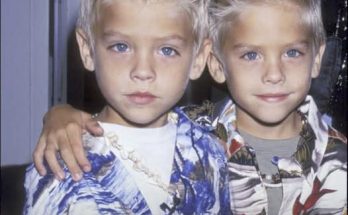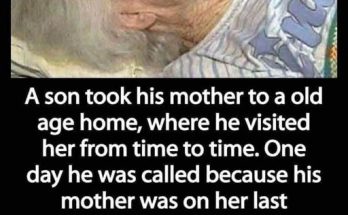The fog in Hallstead County has always had a way of swallowing things. It drapes across the pines like mourning veils, hangs heavy beneath porch lights, and blurs the old country roads until memory itself feels uncertain. Here, time doesn’t pass—it lingers. And so did the question that haunted this place for nearly four decades:
What happened to the fifteen children who boarded a yellow school bus one spring morning in 1986… and never came back?
The case was cold. Ice cold. Over the years, it became more ghost story than file folder, a whispered warning passed down in church pews and over coffee shop counters. Most believed the truth was lost forever—buried under years, shame, and silence.
But the truth has a way of surfacing. Even in a town that tried so hard to forget.
The Call That Changed Everything
It was just after 7 a.m. when the call came in. Deputy Sheriff Lana Whitaker was pouring her first cup of coffee when the dispatcher crackled through:
“Possible discovery out by Morning Lake Pines. Construction crew digging septic lines found something. Says it might be a bus.”
Lana froze.
She didn’t need a case number. Didn’t need to look it up.
She already knew what they’d found.
In 1986, Lana had been just a child—home sick with chickenpox that May morning when her classmates climbed onto that yellow school bus for a field trip to a new summer camp by Morning Lake.
She had watched them go from her bedroom window. And she never saw them again.
The Bus Beneath the Pines
Morning Lake was only twenty minutes away, but the fog stretched time. Pines rose like sentinels along the gravel road. As Lana turned onto the overgrown service trail, the past seemed to press in from every direction.
The construction foreman met her at the edge of a dug-up patch of earth. “We didn’t touch anything once we saw what it was,” he said.
What they’d uncovered was unmistakable. The bus was half-crushed beneath decades of dirt and pine roots, its yellow paint faded to bone. The emergency exit had been pried open. Inside, the air was stale—earthy and wrong.
A pink lunchbox still lay beneath one of the seats. A single child’s shoe, moss-covered, sat on the back step.
But there were no bodies.
The bus was empty.
Near the driver’s seat, Lana found a class list taped to the dashboard—written in the delicate handwriting of Miss Delaney, the homeroom teacher who vanished with the children.
At the bottom of the list, in thick red marker:
“We never made it to Morning Lake.”
A Case Box Full of Dust and Silence
Lana drove straight to the county records office.
The case file—labeled “Field Trip 6B – May 19, 1986”—was retrieved from the vault. Inside were faded photos, lists of personal items, and that same final stamp that had haunted Hallstead for years:
“MISSING PERSONS PRESUMED LOST. NO EVIDENCE OF FOUL PLAY.”
Except now there was.
Rumors had always swirled. The bus driver, Carl Davis, had been a temp. No background check. He vanished too.
The substitute teacher—Ms. Atwell—had no history before or after that day. Her listed address was now just a tangle of brush and collapsed boards.
Some said the bus crashed into the lake. Others whispered about cults, secret groups, or mass runaways. But no trace had ever surfaced—until now.
And then came the second call.
“She Keeps Saying She’s Twelve”
A woman had been found half a mile from the dig site—barefoot, emaciated, sunburned, and delirious. A couple had spotted her while fishing. She was brought to the county hospital.
“She keeps saying she’s twelve,” the nurse told Lana, handing her a clipboard. “We thought it was trauma. But she gave us a name.”
Nora Kelly.
One of the fifteen children who vanished.
Lana entered the hospital room and froze.
The woman—frail, pale, with tangled hair—lifted her gaze slowly. Her eyes were green. Lana knew those eyes.
“You got old,” Nora whispered, tears welling.
“You remember me?” Lana asked.
“You had chickenpox,” she said. “You were supposed to come too.”
“They Told Us No One Would Come”
In the days that followed, the puzzle began to take shape.
Forensics found no remains in the bus, but a photo had slipped behind a panel: children standing in front of a boarded building, their expressions blank. Behind them, a tall man with a beard stood in the shadows.
Nora remembered flashes. The driver was wrong—a stranger. At a fork in the road, they turned away from the camp.
“He said the lake wasn’t ready yet. That we had to wait.”
She remembered waking in a barn with blacked-out windows, clocks that always said Tuesday, even when it wasn’t. They were given new names.
“Some forgot who they were,” she said. “But I didn’t. I held on.”
Clues in the Weeds
Lana traced a lead to County Line Road—a run-down farm once owned by a man named Avery. In the overgrown weeds, she found a bracelet inscribed: Kimmy Leong, one of the missing.
Inside the barn: carved names. Polaroids. Evidence of a long, organized deception.
Children, renamed as Dove. Silence. Glory. Their real names erased.
One photo showed a boy near a campfire. The note read:
“He stayed. He chose to stay.”
That boy was Aaron Develin—now a man living quietly in Hallstead under his real name.
When Lana confronted him, he confessed.
“Not everyone wanted to leave,” he said. “I stayed. I believed in it. For a long time.”
“They Called It Haven”
Aaron led Lana to the ruins of the original sanctuary—a burned-out structure hidden deep in the woods. There, beneath a fallen beam, she found a cassette recorder, a drawing, and one final message scratched into a piece of plywood:
“We are still here.”
A trail led further into the forest.
There, at the base of a lightning-struck cedar, Lana found a hatch camouflaged by leaves.
It opened into a cold, dark tunnel.
Below: rooms with bunk beds, murals drawn in crayon, and a central chamber filled with fifteen small desks. At the center, a glass case. Inside: a curriculum binder labeled:
“Obedience Is Safety. Memory Is Danger.”
Lana closed her eyes. So many years. So many missed signs.
The Survivors
In a sealed side room, hundreds of photographs lined the walls. Drawings. Notes. At the center, a mural of a girl running through trees. Underneath:
Cassia.
Lana traced the name to a woman in town—Maya Ellison, owner of the used bookstore.
When shown the mural, Maya broke down.
“I thought she was someone I made up,” she whispered. “A story I told myself. I never believed it was me.”
Three survivors now. Nora. Maya. And Kimmy, who was found soon after, living under another name in a foster home out of state.
Not all could be saved. Some had died. Some were still out there—forgotten. Hidden. Waiting.
A Town Begins to Heal
Today, a plaque stands at Morning Lake:
“In memory of the missing. To those who waited in silence—your names are remembered.”
The town breathes again, not because the tragedy is over—but because the truth has begun to speak.
Lana keeps the photo of the children in her office. The first winter. Blank faces. Behind them, a man whose name we may never know.
But in those once-forgotten woods, someone lit a candle of hope.
And Hallstead County will never forget again.



